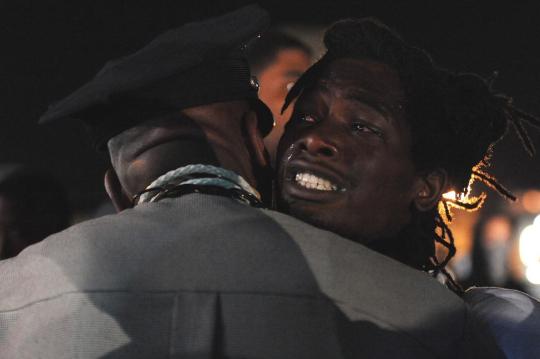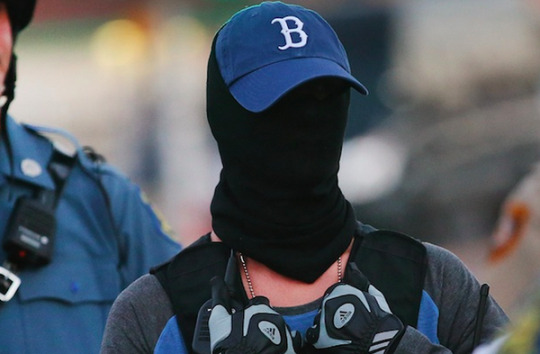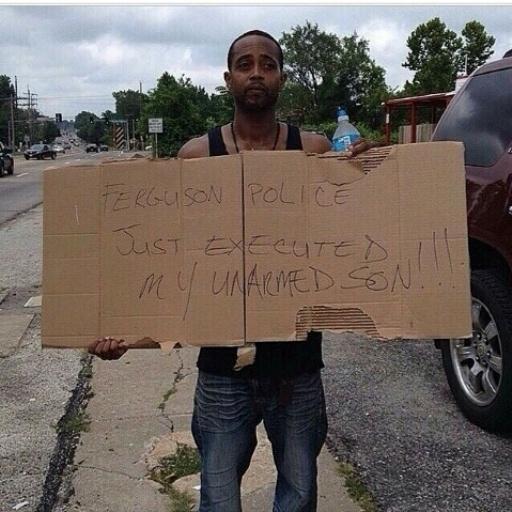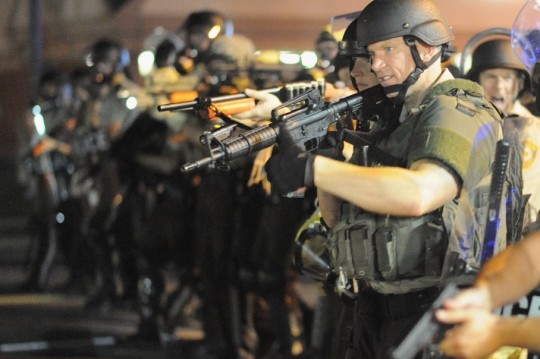Text
In the Wake: On Blackness and Being.
“In this original and trenchant work, Christina Sharpe interrogates literary, visual, cinematic, and quotidian representations of Black life that comprise what she calls the "orthography of the wake." Activating multiple registers of "wake"—the path behind a ship, keeping watch with the dead, coming to consciousness—Sharpe illustrates how Black lives are swept up and animated by the afterlives of slavery, and she delineates what survives despite such insistent violence and negation. Initiating and describing a theory and method of reading the metaphors and materiality of "the wake," "the ship," "the hold," and "the weather," Sharpe shows how the sign of the slave ship marks and haunts contemporary Black life in the diaspora and how the specter of the hold produces conditions of containment, regulation and punishment, but also something in excess of them. In the weather, Sharpe situates antiblackness and white supremacy as the total climate that produces premature Black death as "normal." Formulating the wake and "wake work" as sites of artistic production, resistance, consciousness, and possibility for living in diaspora, In the Wake offers a way forward.“
40 notes
·
View notes
Photo

Migdalia Valdes
Bad Days Made Beautiful
http://www.migdaliavaldes.com/baddays.html
13 notes
·
View notes
Photo





N.O. lawyer transforms Whitney Plantation into powerful slavery museum
BY MIMI READ
WALLACE — At Whitney Plantation, one of the antebellum estates that line the Great River Road between New Orleans and Baton Rouge, the architectural centerpiece is a Creole-style main house where hand-painted ceilings are adorned with flowers and vines. Out front are a matching pair of pigeonniers and an alley of oak trees whose branches theatrically drag the ground.
It’s easy to imagine a typical moonlight-and-magnolias tour unfolding here, with guides in hoop skirts expounding on the antiques — except that Whitney’s owner, John Cummings, will have none of that.
“Who in the hell built this house?” Cummings thundered recently while ferrying a couple of visitors around Whitney’s 250 acres in a golf cart through the rain. “Who built this son of a bitch? We have to own our history.”
[Continue reading article at The New Orleans Advocate.]
3K notes
·
View notes
Photo




HEALTH: Ebola – as seen through the eyes of a 13-year-old from Sierra Leone -
http://t.co/Xd283SBRdd
19 notes
·
View notes
Photo

"We're homeless. We'll always be animals to them."
14 notes
·
View notes
Photo

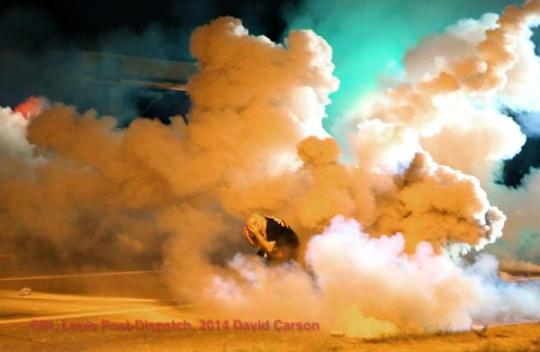


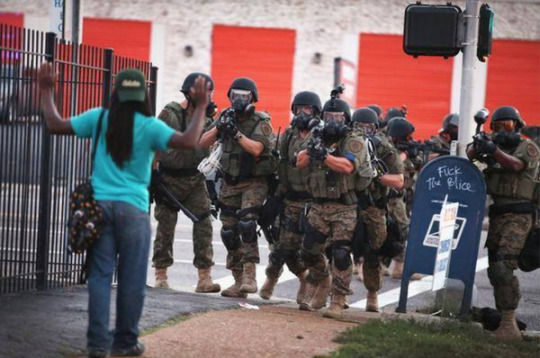

Black Life, Annotated
44 notes
·
View notes
Text
Thinking Juxtapositionally | Mike Brown, Ferguson, and Gratuitous Violence
Stanford research examines whites' perception of blacks and crime
Stanford psychology researchers discovered that when white voters perceive more black Americans in the prison population, they support harsher laws.
Although African-Americans constitute only 12 percent of America's population, they represent 40 percent of the nation's prison inmates.
But informing the white public of this disproportionate incarceration rate may actually bolster support for the very policies that perpetuate the inequality, according to a study published in Psychological Science, a journal of the Association for Psychological Science.
Stanford psychology researchers Rebecca Hetey and Jennifer Eberhardt found that when white people were told about these racial disparities, they reported being more afraid of crime and more likely to support the kinds of punitive policies that exacerbate the racial disparities.
Study: Whites Think Black People Feel Less Pain
MARTIN: Now you drew, for your piece in Slate, on research that was actually published in May of 2011. It was published in Italy. And in the piece, you said that when white people were shown a picture of a white person in pain, they actually reacted differently than they did when the person was black. Could you talk a little bit more about that?
SILVERSTEIN: Sure. So basically what had happened was the researchers decided to show a group of participants videos, videos of people who were experiencing the same stimuli. One was very painful, or at least might appear to be, a needle touching their skin. And another was potentially harmless, just an eraser. And it turned out that when viewers saw the white people receiving a painful stimuli, they responded much more dramatically than they did for black people. This wasn't the only time we've seen this. We've seen this in other studies, as well. And this is basically what we call the racial empathy gap.
MARTIN: But you also noted that, you know, that African-Americans also experienced this, that they also - that there have been studies that've shown that African-Americans also don't react as strongly when they are shown pictures of black people in pain. Why might that be? And, I mean...

32 notes
·
View notes
Text
Frank B. Wilderson, “Wallowing in the contradictions”, Part 1
I might have feelings about justice, for example I feel that the killing of Oscar Grant by a BART police officer was unjust; and that the verdict in the case (involuntary manslaughter) is also unjust. But justice is not a register that I trade in as a theorist. And perhaps not even as a politico. I am interested in ethics, which is to say that I am interested in explaining relations of power. You might say that both of my books are arguing that the existence of the world, meaning the existence of the modern era, is unjust. It would be hard to find a corner of justice within an unjust paradigm, unless you made a provisional move away from explaining the paradigm. As regards the first part of your question: I believe in the spirit world; that is to say I believe that the African ancestors are still with us and can be consulted from time to time. But I would not try to calibrate the gap between what I believe and what I can explain. I don’t think that would be useful.

58 notes
·
View notes
Text
How much is a nigger supposed to take?
"Tell me something, Stamp." Paul D’s eyes were rheumy. "Tell me this one thing. How much is a nigger supposed to take? Tell me. How much?"
"All he can," said Stamp Paid. "All he can."
"Why? Why? Why? Why? Why?"
50 notes
·
View notes
Text
In these Times - Eater of Death - Shailjah Patel
[...]
And finally
I saw
the savagery
of a people
who would gloat
over those they kill,
who would take the limbs,
eyes, sanity
of their victims
before execution. I cried out
to the shelter roof, dark as a coffin:
Have they no mothers
no children
in America?
[...]
Their names will not be remembered,
they are not American.
Museums will not hold their relics, they are not
American. No other mother’s
children will be slaughtered
in their memory, they are not
American.
But I?
I have eaten
from the bowels of hell,
chewed and swallowed
the fragments of my children
and now – do you see?
I am no longer human.
[...]
Eater of Death
12 notes
·
View notes
Text
Quilombos and Reparations
According to Brazilian law, residents of quilombos have a constitutional right to land settled by their ancestors -- and that right, though rarely fulfilled, is quietly revolutionizing the country’s race relations.

25 notes
·
View notes
Text
Black
Don't correct for black....
7 notes
·
View notes
Text
Blackest is the new black: Scientists have developed a material so dark that you can't see it...
"A British company has produced a "strange, alien" material so black that it absorbs all but 0.035 per cent of visual light, setting a new world record. To stare at the "super black" coating made of carbon nanotubes – each 10,000 times thinner than a human hair – is an odd experience. It is so dark that the human eye cannot understand what it is seeing. Shapes and contours are lost, leaving nothing but an apparent abyss. [...]
You expect to see the hills and all you can see … it's like black, like a hole, like there's nothing there. It just looks so strange,"
Asked about the prospect of a little black dress, he said it would be "very expensive" – the cost of the material is one of the things he was unable to reveal.
"You would lose all features of the dress. It would just be something black passing through," he said.
[...]
Stephen Westland, professor of colour science and technology at Leeds University, said traditional black was actually a colour of light and scientists were now pushing it to something out of this world.
"Many people think black is the absence of light. I totally disagree with that. Unless you are looking at a black hole, nobody has actually seen something which has no light," he said. "These new materials, they are pretty much as black as we can get, almost as close to a black hole as we could imagine."
7 notes
·
View notes



